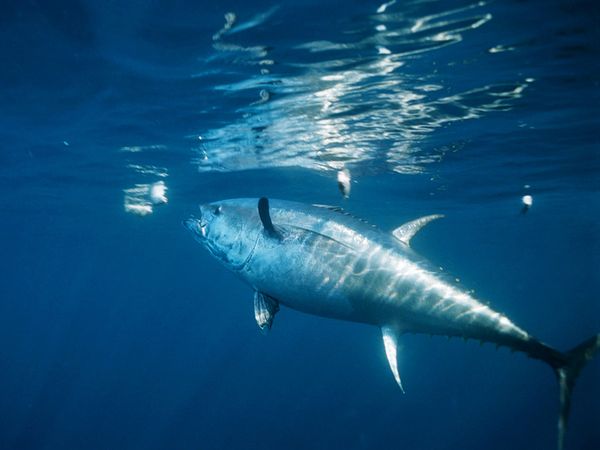Bluefin tuna at record radioactive contamination from Fukushima nuclear accident
A record radioactive contamination from last year’s Fukushima nuclear accident has been detected in Pacific Bluefin tuna caught off the coast of California.
Bluefin tuna would have picked up the pollution while swimming in Japanese waters, before then moving to the far side of the ocean.
Scientists stress that the fish are still perfectly safe to eat.
However, the case does illustrate how migratory species can carry pollution over vast distances, they say.
“It’s a lesson to us in how interconnected eco-regions can be, even when they may be separated by thousands of miles,” said Nicholas Fisher, a professor of marine sciences at Stony Brook University, New York.
Fisher and colleagues report their study in the journal Proceedings of the National Academy of Sciences.

A record radioactive contamination from last year's Fukushima nuclear accident has been detected in Pacific Bluefin tuna caught off the coast of California
They examined the muscle tissues of 15 Bluefin tuna (Thunnus orientalis) taken from waters off San Diego in August 2011, just a few months after the accident at the Fukushima Daiichi nuclear plant.
These were animals whose parents would have spawned in Japanese waters and spent one to two years locally before heading to feeding grounds in the eastern Pacific.
All the fish examined in the study showed elevated levels of radioactive caesium – the isotopes 134 and 137.
Caesium-137 is present in seawater anyway as a result of the fallout from atomic weapons testing, but the short, two-year half-life of caesium-134 means the contamination can be tied directly to Fukushima. There is no other explanation for the isotope’s presence.
The measured concentrations were about 10 times the total caesium radioactivity seen in tuna specimens taken from before the accident.
As a control, the team also examined Yellowfin tuna, which are largely residential in the eastern Pacific.
These animals showed no difference in their pre- or post-Fukushima concentrations.
The research is likely to get attention because Bluefin tuna is an iconic species and a highly valuable fishery – thousands of tons are landed annually.
But consumers should have no health concerns about eating California-caught tuna from last year, the team says.
The levels of radioactivity are well within permitted limits, and below those from other radioisotopes that occur naturally in the environment, such as potassium-40.
“The potassium was about 30 times higher than the combined radio-caesium levels. If you calculate how much additional radioactivity there is in the Pacific Bluefin tuna caught in California relative to the natural background – it’s about 3%,” said Prof. Nicholas Fisher.
The scientists even calculated how much radioactivity might have been present in the fish before they swam across the Pacific (it would have fallen over time) and figured it could have been 50% above background levels; but, again, this would still have met the legal requirements for safe consumption.
Tuna caught in the coming months will be subjected to new tests. These animals would have spent much longer in Japanese waters and so conceivably could have a very different pollution load.
The team also believes the investigation should be extended to other migratory species that frequent Japanese waters.
Fukushima pollution is potentially a very useful tool to trace the origin and timing of animal movements. The ratio of caesium 134 to 137 could be used like a clock to work out when and how long a particular migration took.
“This information might be useful in conservation efforts or in managing fisheries,” said Prof. Nicholas Fisher.

